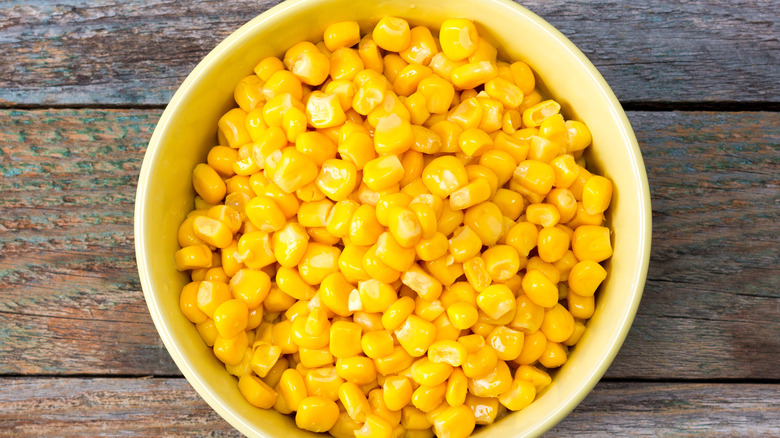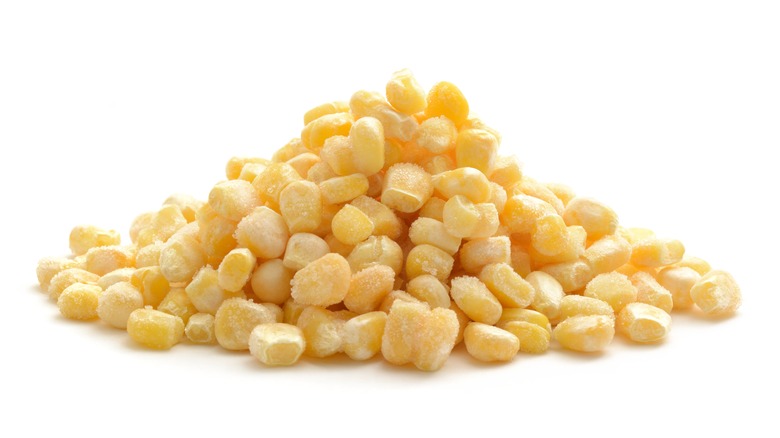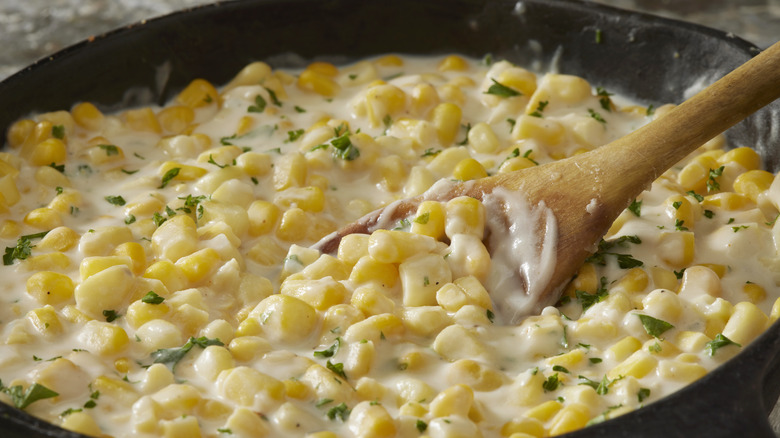Why You Should Avoid Boiling Frozen Corn (Even If The Package Says To)
One of the easiest kitchen shortcuts for saving time and money is cooking with frozen vegetables. Not only are frozen vegetables cheaper, but they allow you to buy produce when it isn't in season, meaning you can enjoy the vitamins and nutrients from these products year-round. They keep well in the freezer and are easy to keep on hand for when you need vegetables in a pinch. Plus, frozen vegetables are pre-cooked and generally painless to heat and use. However, when it comes to these heating methods, some are better than others, whether in flavor, texture, or nutrient retention.
Many frozen vegetable packages, particularly those of frozen corn, instruct the consumer to boil the product to heat it thoroughly. Although boiling vegetables is expedient, it has a number of downsides. Boiling frozen corn results in a product that tastes inferior and loses many of its nutrients. There are much better options to use instead when heating this product through.
Why you shouldn't boil frozen corn
Despite what the package says, boiling frozen corn isn't the best idea. You can do it — it's a safe and quick way to heat it up. However, there are drawbacks to this method. First and foremost, boiling results in corn that isn't as tasty as some other methods. When cooking corn in water that will later be drained, it takes away the ability to cook corn in seasonings and with other ingredients. This results in a lost opportunity to add interest to the corn. Some internet users even go as far as to say they've experienced flavor loss from this method; Erica Walker of Favorite Family Recipes claims it "zaps all the flavor out of the corn."
In addition, boiling corn results in nutrient loss. In an interview with LiveStrong, Lisa Moskovitz, RD, CEO of NY Nutrition Group, noted that when boiling corn, most of the nutrients go into the boiling liquid, especially B and C vitamins. The water is then removed when you're finished cooking the corn, meaning these vitamins will go straight down the drain. This mistake doesn't just apply to frozen corn; it also holds true when boiling corn on the cob.
Better ways to cook frozen corn
For the most flavorful frozen corn, one of the best methods is to cook it on the stovetop. When cooking it on its own as a side dish, sauteing allows you to add other ingredients that will enhance it, such as butter and seasonings. If you're using it as an ingredient in a recipe, such as creamed corn, you can cook it directly in the pot with the other components; no need to cook it beforehand. This will allow it to take on other flavors in the dish.
In addition, sauteing leads to more retained nutrients. Because the corn isn't drained after stovetop preparation, the nutrients stay in the pan, meaning they can still be consumed when eating the corn. This makes sauteing a healthy alternative to boiling frozen corn.
Next time the package instructs you to boil your frozen corn, don't do it — at least not if you want the best-tasting and most nutritious corn. While boiling may be one of the easiest ways to cook corn, if you have the time and energy, there are other ways to prepare it for a better result.


